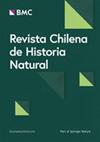保护区对贫困的影响:来自智利的证据
IF 1.4
4区 环境科学与生态学
Q3 BIODIVERSITY CONSERVATION
引用次数: 0
摘要
本文估计了1982 - 2002年智利保护区与贫困之间的因果关系。智利是承诺到2030年保护地球30%的国家联盟的一部分;这一决定意味着增加该国保护区的数量。这一决定的结果是,关于保护区对经济和社会的潜在影响的全国性辩论日益激烈。通过估计保护区对贫困的因果影响,我们的目标是为智利的这场辩论做出贡献。我们使用面板数据和准实验方法来估计因果关系。我们发现,建立至少覆盖一个单位陆地面积17%的保护区,可以使贫困指数降低0.216个标准差。这个结果对任意的实现选择不敏感。此外,我们还表明,这种影响是由巴塔哥尼亚地区驱动的,该地区在本研究的时间框架内拥有最多的新保护区。除了展示保护区对社会的好处之外,我们希望这里提出的发现也可以用来吸引新的投资和对智利目前资金不足的保护区的财政支持。本文章由计算机程序翻译,如有差异,请以英文原文为准。
The impact of protected areas on poverty: evidence from Chile
In this paper, we estimate the causal relationship between protected areas and poverty in Chile from 1982 to 2002. Chile is part of the coalition of countries committed to protecting 30% of the planet by 2030; a decision that implies increasing the number of protected areas in the country. As a result of this decision, grows the national debate about the potential impacts of protected areas on the economy and society. By estimating the causal effect of protected areas on poverty, we aim to contribute to this debate in Chile. We use panel data and a quasi-experimental approach to estimate the causal effect. We find that establishing a protected area covering at least 17% of a unit’s terrestrial area causes a reduction of 0.216 standard deviations in the poverty index. This result is not sensitive to arbitrary implementation choices. Additionally, we show that the effect is driven by the Patagonia region, the part of Chile with the largest amount of new protected areas during the time frame of this study. Besides showing the benefits of protected areas to society, we hope the findings presented here might also be used to attract new investments and financial support to protected areas currently underfunded in Chile.
求助全文
通过发布文献求助,成功后即可免费获取论文全文。
去求助
来源期刊

Revista Chilena de Historia Natural
环境科学-生态学
CiteScore
2.50
自引率
18.20%
发文量
9
审稿时长
>36 weeks
期刊介绍:
Revista Chilena de Historia Natural (RCHN) publishes original research dealing with past and present phenomena from organismic to higher levels of biological organization, considering both empirical and theoretical studies on all kinds of taxa and environments.
The major areas covered by RCHN are: botany and zoology; physiological and behavioral ecology; population biology; community and ecosystem ecology; systematics, biogeography and evolution.
 求助内容:
求助内容: 应助结果提醒方式:
应助结果提醒方式:


